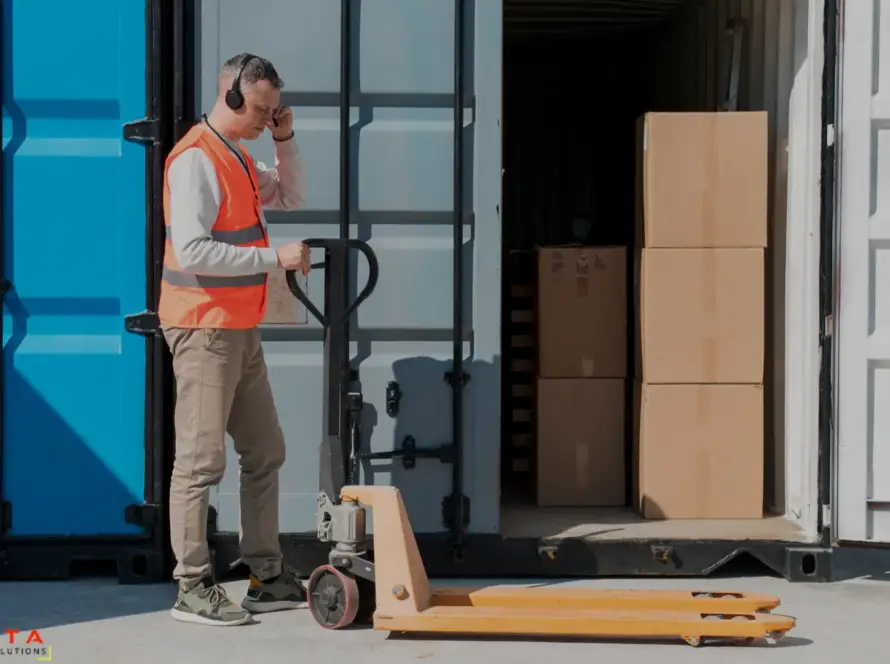Challenges in Supply Chain Operations & Solutions
The supply chain operations function as an invisible force that propels product movement through every stage from material acquisition to final delivery to customers. Businesses that operate supply chains today must focus on product movement without losing sight of speed and cost effectiveness and the need to handle multiple complexities. Companies encounter rising operational challenges because demand volatility and transportation breakdowns create difficulties in maintaining smooth business activities with positive financial results and contented customers.
The combination of technology with strategic planning and continuous innovation serves as the solution to address these challenges. The blog examines leading supply chain operations challenges and presents functional solutions which assist businesses to reduce potential risks while maximising operational effectiveness and securing their logistics plans for the future.
Read our Full Blog on: What is Supply Chain Operations?

1. Demand Forecasting and Inventory Management
Challenge
The accurate prediction of demand stands as one of the longest-lasting difficulties within supply chain management systems. The challenge for businesses exists in determining the correct inventory level because excessive stock requires capital investment and results in higher holding costs, yet insufficient stock leads to inventory depletion and delivery delays and lost revenue opportunities.
Fluctuating demand patterns, combined with promotional strategies together with shifting customer behavior make forecasting demand difficult to predict accurately. A minor forecasting mistake will propagate through all supply chain operations.
Solution
To combat this, businesses are increasingly turning to AI-powered demand forecasting tools that analyze vast amounts of historical sales data, market trends, and external variables (like weather, holidays, and economic indicators). These tools help generate more accurate forecasts, enabling better planning and stock control.
Implementing Just-in-Time (JIT) inventory systems can reduce the burden of holding excess stock by aligning inventory replenishment closely with actual demand. In parallel, using IoT sensors and RFID technology allows for real-time inventory visibility, reducing manual errors and improving responsiveness.
2. Supply Chain Disruptions
Challenge
Supply chains now face increased instability due to various factors, including worldwide disease outbreaks and geopolitical conflicts, together with natural disasters and cybersecurity attacks. The disruptions create production stoppages that delay shipments and lead to major financial losses, particularly for businesses depending on one supplier or geographical area.
Solution
Businesses need to implement multi-sourcing approaches to distribute their supply chain across various suppliers and regions for building resilience. Operations remain stable even when one supply source becomes compromised because businesses maintain multiple suppliers.
Having reserve supplies of crucial parts along with predictive analysis models to run failure simulations, helps companies develop advanced planning strategies. Through predictive modeling, organizations can detect supply chain weaknesses so they can take necessary actions before problems develop.
Read our Complete Blog on: What is Supply Chain Risk Management?
3. Rising Transportation Costs
Challenge
Transportation is a major cost center in supply chain operations. Factors like rising fuel prices, global inflation, driver shortages, and capacity constraints are pushing freight costs to new highs. For businesses operating on thin margins, this can significantly impact bottom lines.
solution
Leveraging AI-driven logistics software for route optimization and load planning can drastically reduce transportation costs. These platforms consider real-time traffic data, weather patterns, and delivery schedules to find the most efficient routes and consolidate shipments.
For long-haul transportation, shifting from road to intermodal freight transport, such as combining rail with trucks, can provide cost savings and reduce environmental impact. Additionally, negotiating long-term contracts with carriers can help lock in better rates and provide pricing stability during market fluctuations.
4. Last-Mile Delivery Challenges
Challenge
Last-mile delivery—the final stage of the delivery process from warehouse to customer- is often the most costly and inefficient part of logistics. The final delivery stage faces multiple problems, including transportation delays and delivery failures, in addition to quick shipping requirements from customers.
E-commerce growth, together with customer demands for same-day delivery, created increased complexity in last-mile logistics operations, which now stands as a vital factor for customer satisfaction.
Solution
Investing in fulfillment centers located closer to customers reduces delivery times and costs. Crowdsourced delivery models, where gig economy workers handle local deliveries, offer flexibility and scalability.
To enhance delivery success, automated locker systems allow customers to collect packages at their convenience, reducing missed deliveries. Moreover, deploying electric vehicles (EVs) and drones for last-mile delivery not only cuts down costs but also supports sustainability goals.
You May Also Like to Read: 7 Major Supply Chain Risks Companies Encounter and Solutions
Optimize Your Supply Chain Operations with Experts!
5. Supplier Reliability and Quality Control
Challenge
Inconsistent supplier performance can lead to production delays, poor product quality, and non-compliance with regulations. Businesses that rely on a limited supplier base are particularly vulnerable to quality and reliability issues.
Solution
Businesses need to develop strong supplier management systems. The solution for overcoming this challenge includes performing regular audits alongside KPI tracking and maintaining active communication pathways. The implementation of blockchain technology enables businesses to create a system with transparent supplier records, which ensures both traceability and trust.
Businesses need to establish Service Level Agreements (SLAs) that describe performance goals alongside delivery times, along with non-compliance penalty rules. The implementation of these contracts develops both supplier accountability and enhances their business relationships.
You May Also Like to Read: What is Supplier Relationship Management (SRM)?
6. Warehouse Efficiency and Labor Shortages
Challenge
Today’s warehouses face an escalating need to manage their order fulfilment at maximum speed. A labour shortage within the logistics industry makes it more difficult for businesses to meet their fulfilment requirements. Warehouse operations conducted by hand result in waste, together with incorrect order selection and delayed order completion.
Solution
Many warehouses choose automation and robotics systems to boost their operational efficiency. The combination of Autonomous Mobile Robots (AMRs) and robotic picking systems allows warehouses to conduct repetitive tasks nonstop while minimizing human mistakes.
The implementation of an advanced Warehouse Management System (WMS) allows users to monitor inventory levels in real-time while automating task assignments and maximizing storage space. When employees receive training for multiple roles, they become better equipped to assist the company during shifting market demands.
7. Regulatory Compliance and Sustainability Pressures
Challenge
Increasingly stringent regulations around labor laws, environmental impact, and product safety are adding new layers of complexity to global supply chains. Meanwhile, stakeholders and consumers are demanding more sustainable and ethical supply chain practices.
Solution
Compliance doesn’t have to be a burden. Businesses can adopt compliance management software to keep up with changing regulations across regions and industries. These systems can automate documentation, track audit trails, and ensure legal requirements are met.
On the sustainability front, adopting green supply chain—like using electric fleets, optimizing packaging, and reducing emissions, can help organizations meet their ESG (Environmental, Social, Governance) goals. Obtaining ISO and ESG certifications also enhances brand reputation and builds consumer trust.

Thanks For Reading: Top 7 Challenges in Supply Chain Operations & Solutions
Powered By 360Presence


1 Comment